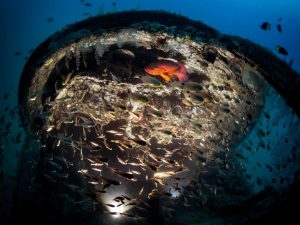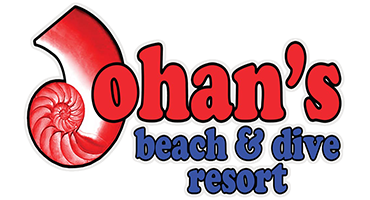Dive a Fat Spad At Subic Bay
Dive a Fat Spad At Subic Bay
Johan’s Beach and Dive Resort at Subic Bay announces the availability of dives on the newly discovered Vietnam war era AD-5 Skyraider.

A rare version of the Korean and Vietnam Wars era US Navy Skyraider has been located in 34 meters of water near the old Cubi Naval Air Station. The Skyraider was designated as an attack aircraft and could be used for ground support as well as a dive bomber. There were 3,180 Skyraiders produced but only 670 were of AD-5 version. The Skyraider typically had just the pilot as crew, however the AD-5 were a wide body version offering side by side seating. Depending on configuration the Crew would be three or four, with two up front and one or two additional crew members in an aft compartment.
Some information about the aircraft had been previously released and now is the time to start diving it. The Skyraider is in excellent condition with only the engine missing. The plane sits flat on a muddy bottom and is available for dives by certified deep divers. Nitrox dives are recommended.
“Johan had hoped to have the aircraft fully identified before opening the location for diving, but circumstances beyond his control change that.” said Charles Davis, the project researcher. “One of the local dive centers ignore a request to wait until we finished documenting the wreck before diving the site. They used information shared with them to find the aircraft themselves. Rumors have it they searched using side scan sonar for three days before finding it. They announced they will start diving it, it was interesting that the announcement had misidentified the aircraft type.” Charles added.
In May, Johan located by side scan sonar something underwater. Divers visited the spot and found that the object
was a nearly intact aircraft. The aircraft was found sitting in mud at 34 meters missing its engine. The rest of the aircraft is in prime condition.
The aircraft has been identified as a Skyraider. The Skyraider family of aircraft started at the end of WWII as a replacement for the Douglas SBD Dauntless dive-bomber. While the Dauntless was highly successful, it was becoming technologically obsolete. Four companies submitted proposals and two were selected for production, one by Martin and one by Douglas. Martin’s AM-1 Mauler saw only limited production. The first Douglas “AD-1 Skyraider” – with “AD” standing for “Attack / Douglas” – performed its initial flight on 5 November 1946, and went into formal service in 1947. The propeller driven aircraft was a single seater and able to carry 3,630 kilograms (8,000 pounds) of weapons on its wings, there was also a 20 millimeter cannon and 200 rounds of ammunition in each wing. It was designed for carrier operation so the wings were able to fold. The Navy loved it, however, the Air Force called it worthless and obsolete and refused to purchase any. Twenty years later the Air Force were eating their harsh words. It’s ability to stay aloft over ten hours and carry a large array of weapons made it ideal in ground support operations in Vietnam. It’s slow speed allowed it to escort and protect rescue helicopters that the Air Force jets could not. It could protect downed pilots and clear landing zones. The Air Force requested that the Navy transfer to them aircraft that the Navy had retired.
The Skyraider Family went through seven versions and numerous variations. The last Skyraider produced was an AD-7 leaving the assemble line on February 18, 1957. The AD-5 version was significantly different than the rest, it had a different tail fin configuration. More importantly, it had a wider fuselage that allowed a side by side configuration. It also had an aft compartment that would hold one or two additional crew. There were 3,180 Skyraiders produced of which only 670 were AD-5s. The Skyraider that Johan found at Subic Bay an AD-5 version. One version of the AD-5 was a night version called the AD-5N. Fifty-three of the AD-5N were converted to an Electronic Counter Measures version the AD-5Q.
While additional research is needed to prove the point, data so far suggest that the AD-5 at Subic Bay is an AD-5Q.
A Navy Electronic Counter measure squadron VAW-13 owned most of the AD-5Q, and one stationed on the aircraft carrier USS Lexington crashed in Subic Bay in January 1962. In May 1962, A detachment of VAW-13 was established at Subic Bay to support operations in Vietnam. While station at Subic Bay Cubi Naval Air Station, the detachment lost two additional aircraft. One of these was recovered, while no records show the recovery of the other one. A overview of the dive site and a short history of the AD-5 at Subic Bay will be available in a few days
Even with the site being open to dives, the research will continue to fully identified the aircraft in question. Even without additional research it is clearly a Fat Spad and possibly the only one that is a dive site.





[…] seldom NDL. EAN-XX is highly recommended on The USS New York, Japanese Patrol Boat, Deeper Barges, Sky Raider and the concrete […]